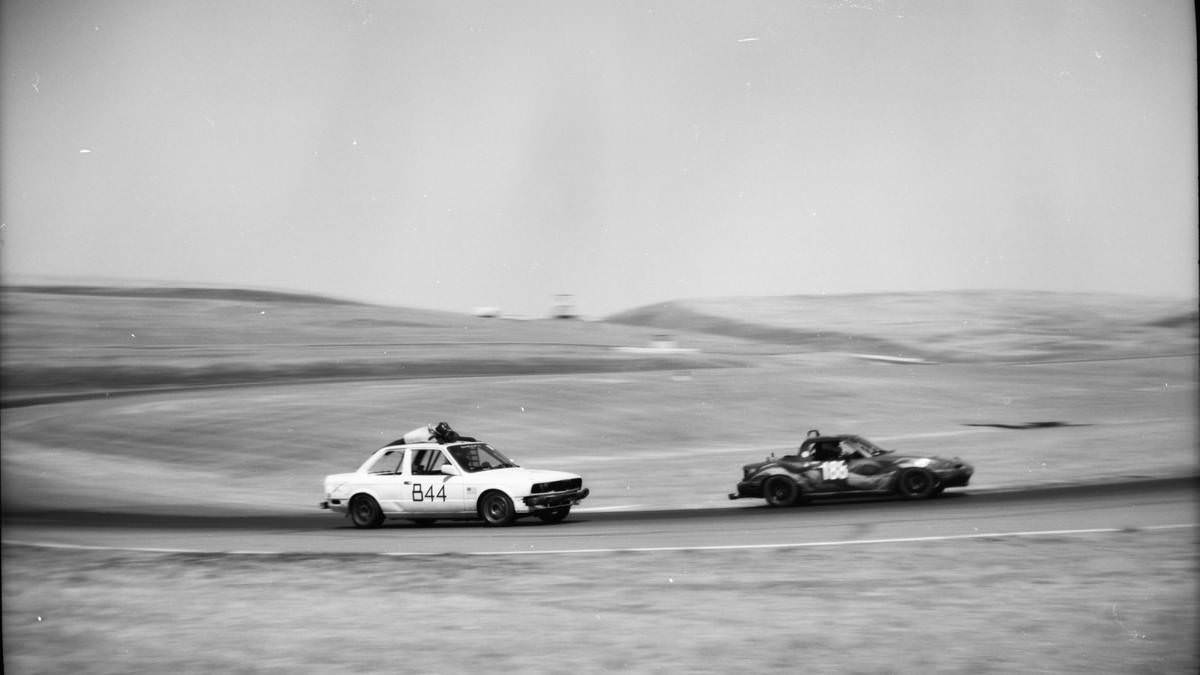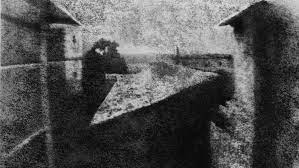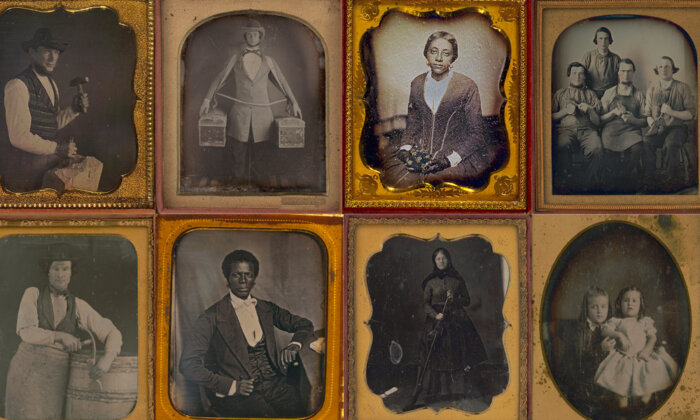
Camera obscura: Dark chamber
The Latin name means ‘dark chamber’ consisted of small darken room with light coming through from a single tiny hole. The light passing through the small hole will project an image of a scene outside the box on the surface opposite to the hole.
Nicephore Niepce:
Born march 7th 1765 in Chalon-sur-Saone France and died in 1833 Chalon-sur-Saone France. He was an French inventor and commonly credited for his photography and a pioneer in that field. He was the first to make a permanent photographic image.

/first-photograph-2673939-5b0840770e23d90036127dd6.jpg&usqp=CAU)
Louis Daguerre:
Born 18 November 1787 and died on 10 July 1851, he was a French artist and photographer recognized for his invention of the daguerreotype process of photography. He became known as one of the fathers of photography.
Daguerre explained that the magic of his dioramas resulted from his use of light in the scenes. He claimed to have discovered a system of painting that could transform the appearance of an object by switching between reflected and refracted light, as well as by changing the colour of the light that fell upon it.


Daguerreotype:
The daguerreotype was the first commercially successful photographic process (1839-1860) in the history of photography. Named after the inventor, Louis Jacques Mandé Daguerre, each daguerreotype is a unique image on a silvered copper plate. The daguerreotype is accurate, detailed and sharp.

Henry fox Talbot

William Henry Fox Talbot is the father of the negative-positive photographic process, as it is practiced today. Talbot was born in Melway; Dorsey, England in 1800 to a wealthy well established family. He was educated at Harrow and Cambridge University; he was deeply interested and knowledgeable in a variety of subjects: botany, art, biblical, astronomy, and ancient language. Talbot was an accomplished mathematician involved in the research of light and optics; he invented the polarizing microscope. He was also politically active and a Member of Parliament. He lived his adult life at this family estate, Lacock Abby, originally built in 1232.
Talbot’s interest in drawing but lack of craftsmanship led him to experiment with capturing and securing an image. In 1835 Talbot had successfully made a photograph of his home, Lacock Abby, which he referred to as “the first instance on record of a house painting it’s own portrait”. He was unaware of Daguerre’s photographic progress in France, and did not publish a description of the process until after the announcement by the French Government of the daguerreotype, January 6, 1839.


Richard Maddox

Maddox is best known for his invention light weight gelatine negative plates for photography in 1871, which enabled photographers to use commercial dry plates off the shelf instead of having to prepare their own emulsions in a mobile darkroom

In 1871, Dr. Richard Maddox developed a way to use gelatine instead of glass for the negatives. A turning point in photography, the process allowed photographers to develop a dry-plate technique rather than the wet plates of the collodion process.
George Eastman

What did George Eastman invent and when?
Eastman introduced the Kodak camera in 1888. Thanks to his inventive genius, anyone could now take pictures with a handheld camera simply by pressing a button. He coined the slogan, “you press the button, we do the rest,” and within a year it became a well-known phrase.
He was a major philanthropist, establishing the Eastman School of Music, and schools of dentistry and medicine at the University of Rochester and in London Eastman Dental Hospital; contributing to the Rochester Institute of Technology (RIT) and the construction of several buildings at the second campus of Massachusetts Institute of Technology (MIT) on the Charles River. In addition, he made major donations to Tuskegee University and Hampton University, historically black universities in the South. With interests in improving health, he provided funds for clinics in London and other European cities to serve low-income residents.

Kodak (brownie)
What was unique about the Kodak Brownie?
One of the very first cameras to make photography simpler and more accessible to everyone was the Kodak Brownie. It was a fixed shutter speed camera with no aperture control or focusing abilities–and was essentially little more than a box with a fake leather exterior for gripping purposes.
How much did the Brownie camera cost in 1900?
The Brownie camera was offered for $1 in 1900. It sold 10 million units in just five years, a success beyond the company’s wildest expectations.

film/print photography
How are film photos printed?
The paper is exposed to a photographic negative, a positive transparency (or slide), or a digital image file projected using an enlarger or digital exposure unit such as a Light Jet or Minilab printer. Following exposure, the paper is processed to reveal and make permanent the latent image.
You can still get most of your film developed and turned into prints through stores that specialize in photography. The actual services vary across different companies. But there are a number of specialty photography retailers all over the country that will develop colour and B&W film in a variety of different sizes.
print photography
First introduced in the 1880s, film negatives became increasingly popular by the early 20th century and essentially replaced glass negatives by the 1920s. gelatin silver print (silver print) • Introduced in the 1870s, the gelatin silver print quickly became the most common photographic printing process.
How were pictures first printed? The earliest photographs were mostly made on metal plates using Daguerre’s process, commonly known as a daguerreotype. While this process resulted in a stable image, the only way to duplicate an image was to take another picture of the original daguerreotype.
Digital photography
Digital photography uses cameras containing arrays of electronic photodetectors to produce images focused by a lens, as opposed to an exposure on photographic film. The captured images are digitized and stored as a computer file ready for further digital processing, viewing, electronic publishing, or digital printing.
What do you need for digital photography?
Memory/Film If you choose an analog camera, you’ll need film. If you choose a digital camera, even if it has internal memory, you’ll want to get a memory card. There are many different types of memory cards, but the two most common are SD (Secure Digital) and CF (Compact Flash).
What is digital photography example?
Electronic/digital cameras: These capture images/photographs and store them in built-in/integrated storage media cards. Computing devices: Examples include a webcam integrated with a computer/laptop or a scanner that enables the capturing of existing physical (paper/card) image.

